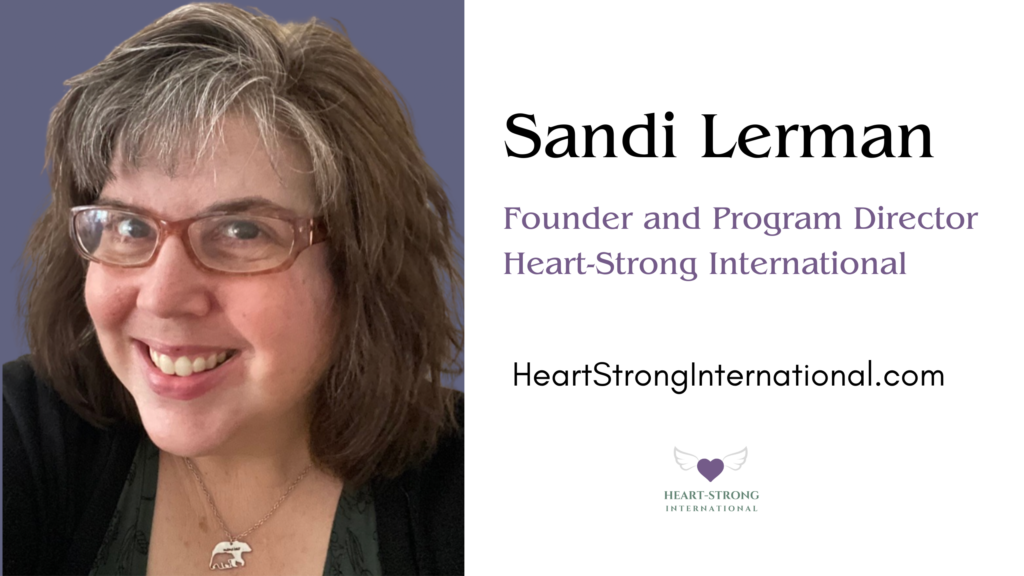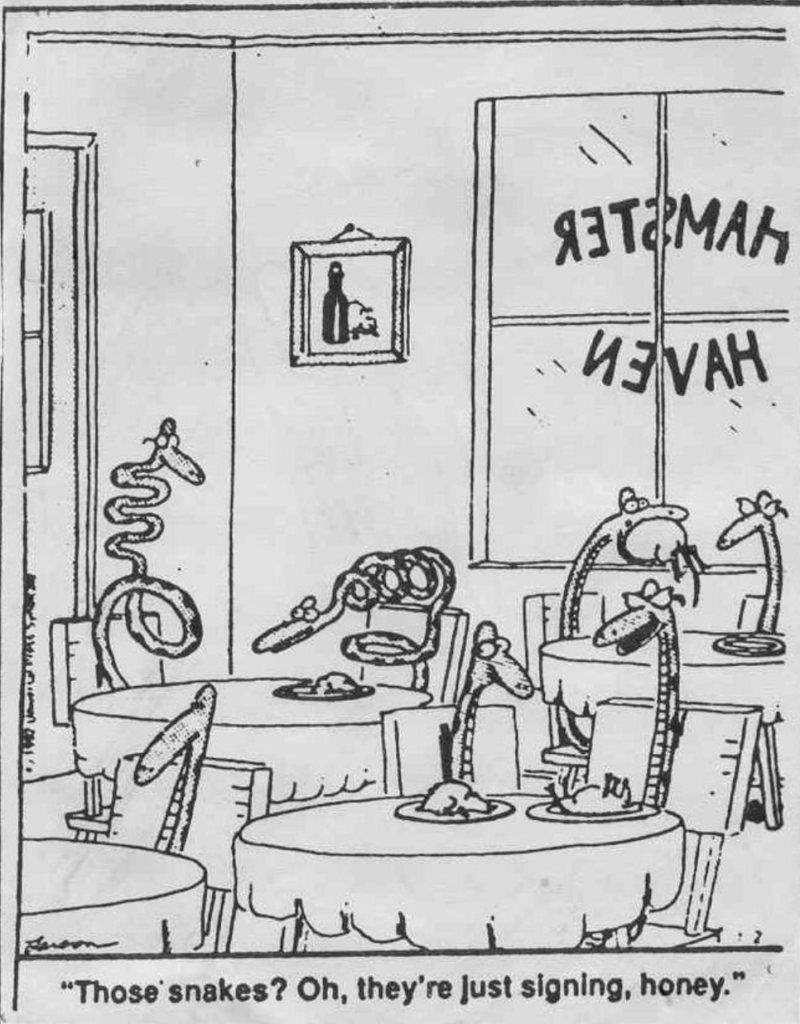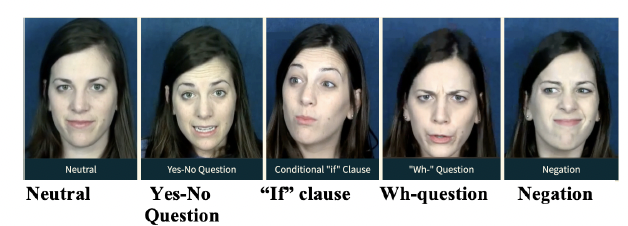Weekly WINGS
Wisdom and Inspiration Nurturing Growth and Success
Visual Langauge
Many of you know that my son Hiro is profoundly deaf and for this reason, we use American Sign Language (ASL) in our home.
ASL a vibrant and complex three-dimensional language with its own syntax, vocabulary, and hand movements that are used in a variety of ways to express ideas, just as we express them in spoken languages.
The Far Side, Gary Larson
However, if you watch native signers of ASL for any length of time, you will notice that most of what makes ASL seem a little “extra” to those not familiar with how it works isn’t the hand movements….it’s the facial expressions.
Facial expressions and non-manual markers in ASL are absolutely essential to its grammar and expressing meaningful messages. Without them, it’s impossible to indicate certain adverbs of intensity and aspect, as well as cues to information about emotional tone and intent.
Many years before meeting and adopting Hiro, I took several ASL classes and spent a lot of time with Deaf native-ASL users, an incredible opportunity to immerse myself in the language and culture. As someone who loves languages and linguistics, learning how to use facial expressions to convey meaning was absolutely fascinating to me.
Eventually I continued to learn more advanced ASL until I decided to complete a sign language interpreting program, and then later did professional interpreting and teaching in the Deaf community for about ten years. (I also lived in Mexico for three years and learned Spanish there… but that’s a story for another day!)
Face to Face, Heart to Heart
When Hiro came home after his adoption, sign language was still relatively new to him. He grew up in an orphanage in Guatemala as the only deaf child there, so he had to be creative with facial expressions and gestures to communicate until he met me and began to learn ASL.
Without a fully developed first language, it was quite challenging communicating with him at first. However, facial expressions often got us through some of the most difficult concepts, along with lots of modeling, drawing pictures, and pantomime.
It didn’t take Hiro long for develop conversational fluency in ASL, as his brain picked up on visual clues much more easily than spoken language.
And while learning a language was incredibly important, I believe that all of these visual connections and facial expressions meant so much more. They were the very foundation of our relationship of trust and attachment.
Hiro learned to find safety and connection in my face. He would look to me for reassurance, understanding, and acceptance all day, every day.
I also realized very quickly that even the slightest hint of my irritation or frustration would quickly be picked up by his hyper-vigilant nervous system – just as quickly as he picked up the nuances of ASL grammar through its facial expressions.
So I began to pay lots more attention and became extra intentional about speaking the deeper language of safety and connection to him — not just in words or signs, but also in body language and facial expressions.
Do your eyes light up?
Whether a child uses ASL or a spoken language to communicate, facial expressions are extremely important, as most researchers agree that somewhere between 70 to 90 percent of all communication is non-verbal.
Our children and students are constantly watching our faces for signs of comfort and safety, and they are on high alert for signs of distress and danger.
They are also looking for reassurance in the eyes of their parents, teachers, and other caring adults that we see them, we value them, and that we are here for them.
One of the most profound pieces of advice that I’ve ever heard on this topic comes from the author and winner of the Nobel Prize in Literature, Toni Morrison.
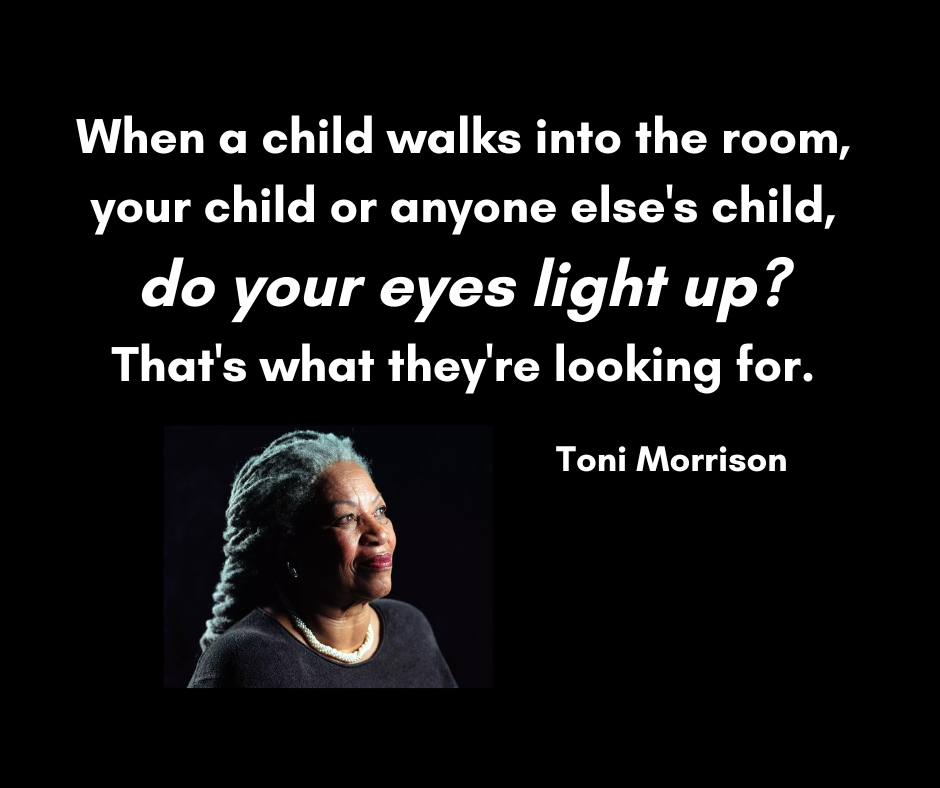
“When a child walks into the room, your child or anyone else’s child, do your eyes light up? That’s what they’re looking for.” Toni Morrisonj
The first time I heard her say this on a television interview, I was teaching high school and had not yet become a parent, but her words had a big impact on the way I started interacting with my students.
I took her advice and started to take time the start of each class to take a deep breath, generate some internal energy and enthusiasm, and then deliberately and intentionally light up my eyes up as I greeted each and every child who walked into my classroom.
It took a little extra effort to do this for the some students. You know which ones I’m talking about. But nevertheless, I decided to do it as an experiment.
To this day, no other teaching or parenting practice has served me better.
Some of the toughest, most shut-down or rebellious high schoolers melted their defenses and softened like butter under the lit-up gaze of a caring adult who noticed and appreciated them with unconditional positive regard.
Of course, following that up with genuine care and connection was important, too… but it was those initial moments of eye-to-eye and heart-to-heart connection that opened the door to better relationships, which opened both their hearts and mine to the power of compassionate empowerment.
I encourage you to give this a try with your own children or students!
Over the next few days, choose one especially grumpy or disengaged child who usually gets corrective scowls from all the adults around them.
Instead of jumping into your daily routine right away, start by just beaming a little light of love and twinkle of excitement when you see them walk into the room.
Use your body to lean toward them in expectation and caring anticipation, with eyes of hope and welcome, rather than recoiling in dread like everyone else does.
Pay attention to what happens. Keep it up every day, and keep track of the result.
Then if you’d like, hit reply and send me an email to let me know!
P.S. By the way… this works with all humans. So you can try it on the adults in your life, too. Everyone is looking for belonging, validation, and connection.
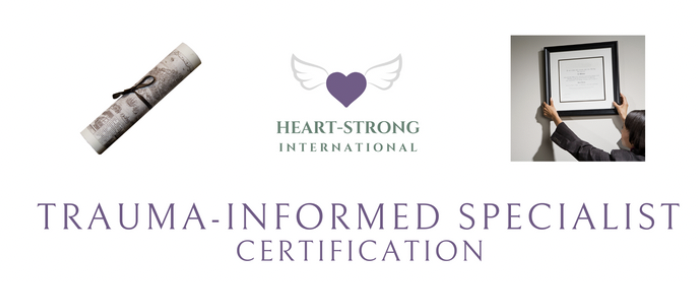
HSI Certification Programs
HSI provides world-class Trauma-Informed Certifications programs for Trauma-Informed Specialists, Certified Parent Coaches, and Certified Educational Trainers.
Become a confident, trusted expert, and earn up to 10 accredited graduate semester units from University of the Pacific!
Enrollment is now open, and for a limited time, there are partial scholarships available.
The Big Book List for Trauma-Informed Changemakers (first edition)
Did you get a copy of this book list, uniquely organized by the Heart-Strong Spiraling Stages of Growth? In it you’ll find a list of 111 books about real growth and transformation that happens in compassionate relationships… and, you’ll also get a bonus mini-course on how to start your own book study or book club!
I hope this Weekly WINGS has been helpful to you!
Keep lighting up your eyes for everyone you meet, especially those who need it the most… and I’ll see you right here again next week!
